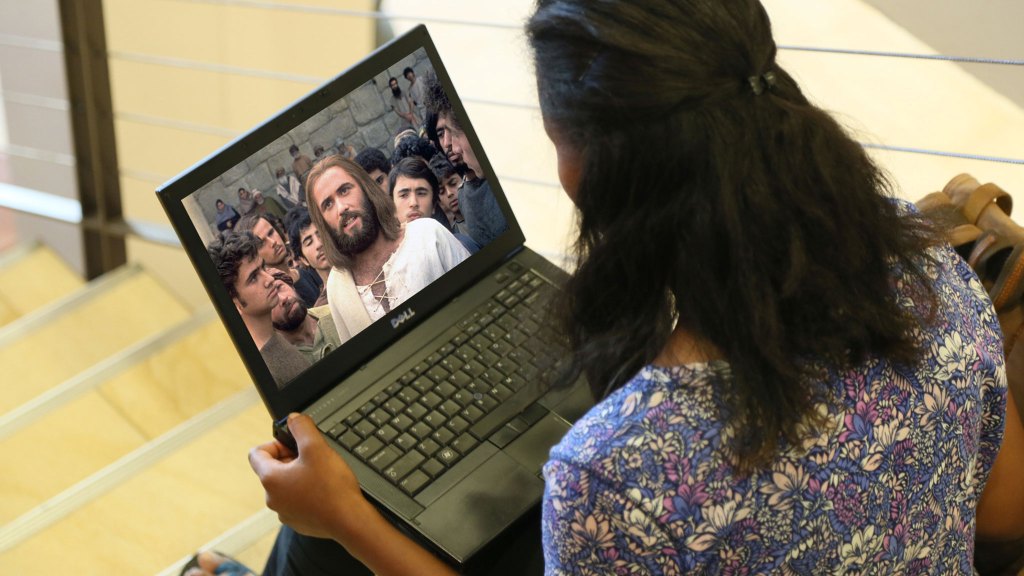Ever since Jesus gave the Great Commission, His followers have been thinking about ways to better reach and communicate His message to the world. As the world and technology has advanced, it’s created new opportunities to spread the gospel. Evangelism has also fueled and inspired major discoveries as well. And sometimes it led to all-new discoveries and ideas.
Here are five innovations that led to dramatic changes in how the followers of Jesus thought about and practiced sharing their faith.
1. The printing press

It’s hard to understand just how much the printing press changed the world we live in. It was like someone turned on the light in the entire world. Literacy increased, and ideas and news could be spread quickly and efficiently. We can draw a direct line between the printing press and the Renaissance, the Reformation, the Enlightenment and the scientific revolution.
Unsurprisingly, the Bible was one of the first books printed using movable type. The ability to mass produce Bibles and religious tracts led to innovations in evangelism that could make open-air preaching even more productive long after the evangelist left town.
2. Missionary societies
The establishment of missionary societies in the 18th and 19th centuries greatly impacted the spread of the gospel. The creation of organizations like the London Missionary Society and the American Board of Commissioners for Foreign Missions helped organize and fund evangelistic efforts worldwide. Institutions like these helped further crystalize a vision for global mission work and marshall resources to accomplish those goals.
In addition to evangelism, missionary societies also helped increase mass education, secure religious liberty, assemble voluntary charitable organizations, and establish hospitals and orphanages.
3. Radio and television

Radio was game-changing for evangelism. It provided a platform for reaching large audiences simultaneously. Radios were widely available and relatively inexpensive, making them ideal for reaching audiences across the socio-economic spectrum. Radios were pervasive and a means of communicating a message twenty-four hours a day, seven days a week.
Television worked as a force multiplier for radio. While television was more expensive and, therefore, initially less omnipresent, it added a powerful visual element to radio’s offerings. Not only did it add a more captivating element to the communication, but the medium offered credibility to both the message and the messenger as viewers could now see who was delivering the content.
4. Film

Most people wouldn’t even think to include film in a list of missional advances. But film is immersive in a way that no other medium can be. It doesn’t just present a message; it wraps it in a compelling story that, to the viewer, unfurls like a revelation. It’s not about telling someone what to think, but putting them in a position to get an insider’s view on a new perspective.
For a better understanding of the power of film for evangelism, check out “Why Film Is So Powerful for Sharing the Gospel.”
The ministry of Jesus Film Project® was built upon film’s impact for the purpose of evangelism. Since the JESUS film premiered in 1979, it’s been translated into more than 2,000 languages, shown to billions of people all over the world, and led to more than 600 million decisions to follow Jesus. It’s hard to deny that the engaging power of film has helped transform the missional landscape.
5. The internet

One of the interesting things about the internet is that it created a need to rethink evangelism, and it also created the means. The existence of the internet changed the way people interacted and communicated. Much of the world was suddenly connected and seemed immediately accessible in an entirely new way. But reaching others with the gospel in this context required new strategies and tools.
People have discovered all kinds of ways to use this new interconnectedness to communicate the gospel, including websites, blogs, podcasts, streaming services even and online charitable giving and opportunities.
If you’re curious about sharing your faith online, you’ll appreciate the post “What Is Digital or Online Evangelism?” You’ll find healthy and productive tips for how you can minister online.
These innovations are the tip of the iceberg
You might be thinking of other innovations that should have made this list—because there are many. In fact, sometimes innovation can lead to inspiration and all new innovation. For instance, we believe film is a powerful tool for global evangelism. Translating and dubbing the JESUS film into more than 2,000 languages has led to breakthroughs and new practices in sharing the story of Jesus. And the desire to share the film in remote places without internet access or power has required creative thinking and led to advancements in equipment.
We believe that together, we can fulfill the Great Commission. To discover how you can support Jesus Film Project’s life-changing work, visit jesusfilm.org/give. Plus, visit our prayer page to learn how you can pray with and for our ministry! We are humbled to do this work alongside you.
